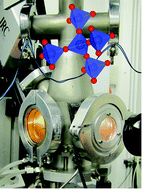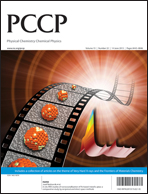A time resolved high energy X-ray diffraction study of cooling liquid SiO2
Abstract
The evolution of the X-ray structure factor and corresponding pair distribution function of SiO2 has been measured upon cooling from the melt using high energy

- This article is part of the themed collection: Hard X-rays and the Frontiers of Materials Chemistry

 Please wait while we load your content...
Please wait while we load your content...